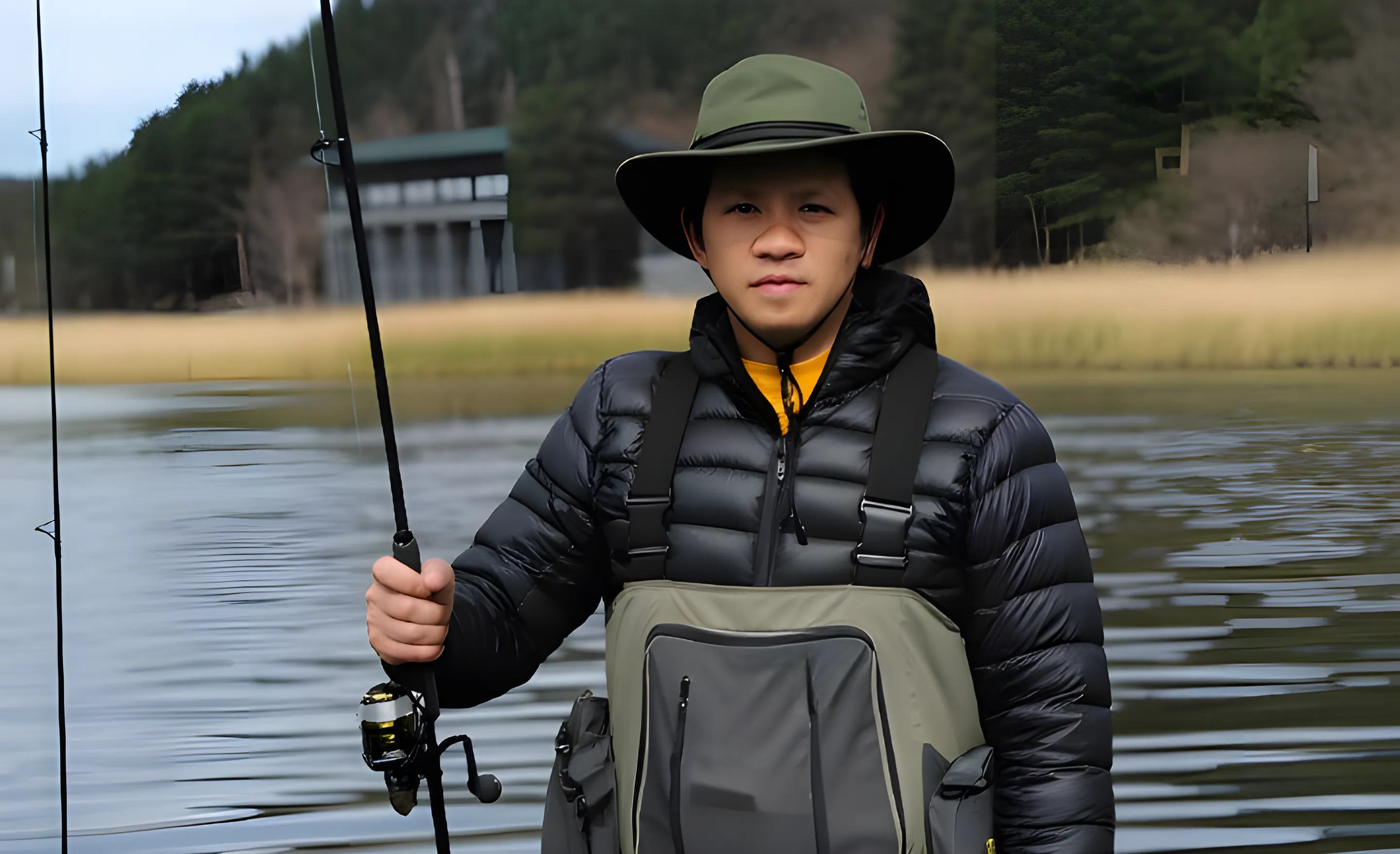How to Fish for Striped Bass: The Complete Guide (2025)
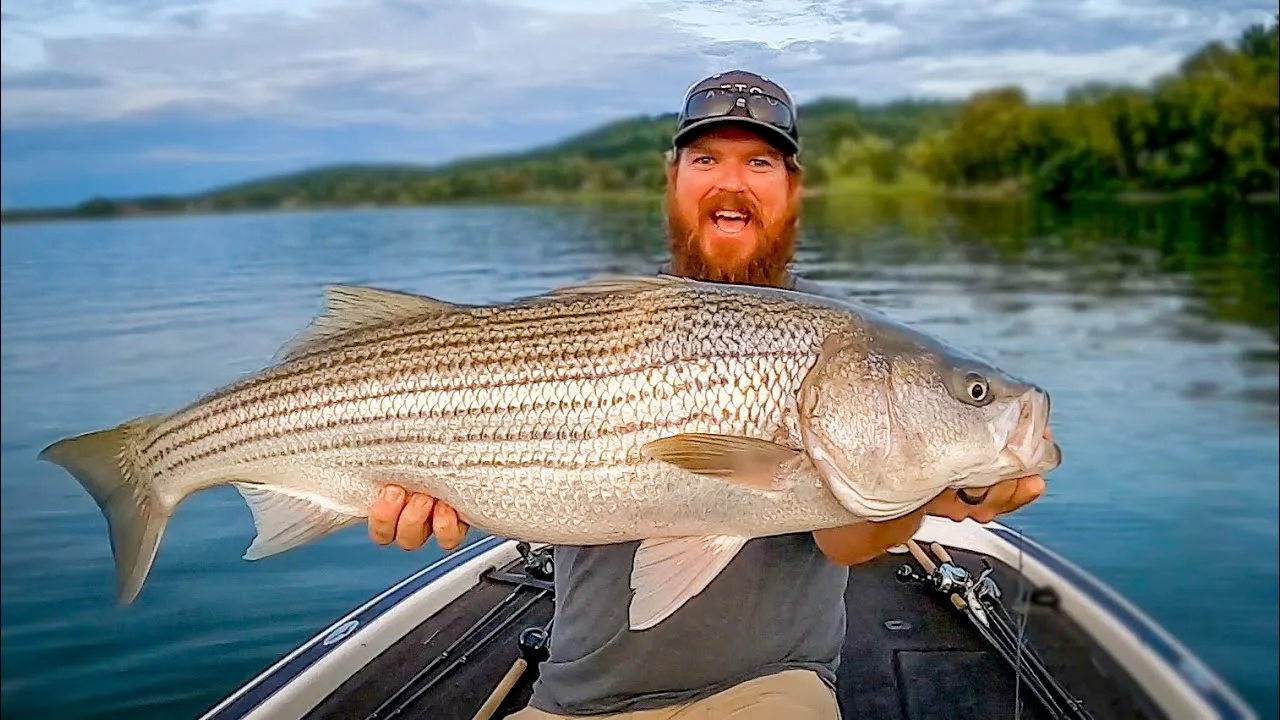
There are few challenges in freshwater angling as rewarding as feeling the thunderous strike of a striped bass. But these intelligent, powerful fish demand more than just luck; they demand a strategy. Here at riversiderelics.com, I've poured years of on-the-water experience into a single resource to answer the one question every aspiring striper angler asks: what does it take? This definitive guide will walk you through everything you need to know about how to fish for striped bass. From their unique behavior to the exact gear that won't let you down, we're covering it all. Let's get you ready for the fight.
What Makes Freshwater Stripers Unique?
When anglers first learn about the different types of bass, they often think of the more common largemouth or smallmouth. However, striped bass are in a class of their own, especially in freshwater settings where their saltwater lineage truly shines. While traditionally migrators, they have adapted incredibly well to reservoirs, offering landlocked anglers a shot at trophy fish without needing an ocean.
What truly sets them apart is their behavior.
Unlike their freshwater cousins, striped bass are heavily influenced by baitfish patterns, water temperature, and oxygen levels. This means a successful strategy requires flexibility and keen observation. These fish are roamers; they travel in schools and can cover miles in a single day searching for food. This makes quality marine electronics and the ability to find bait absolutely essential.
Finally, never underestimate their power. Freshwater or not, stripers hit like freight trains and fight like saltwater bullies. Understanding what makes these fish tick is the first step to consistently catching them.
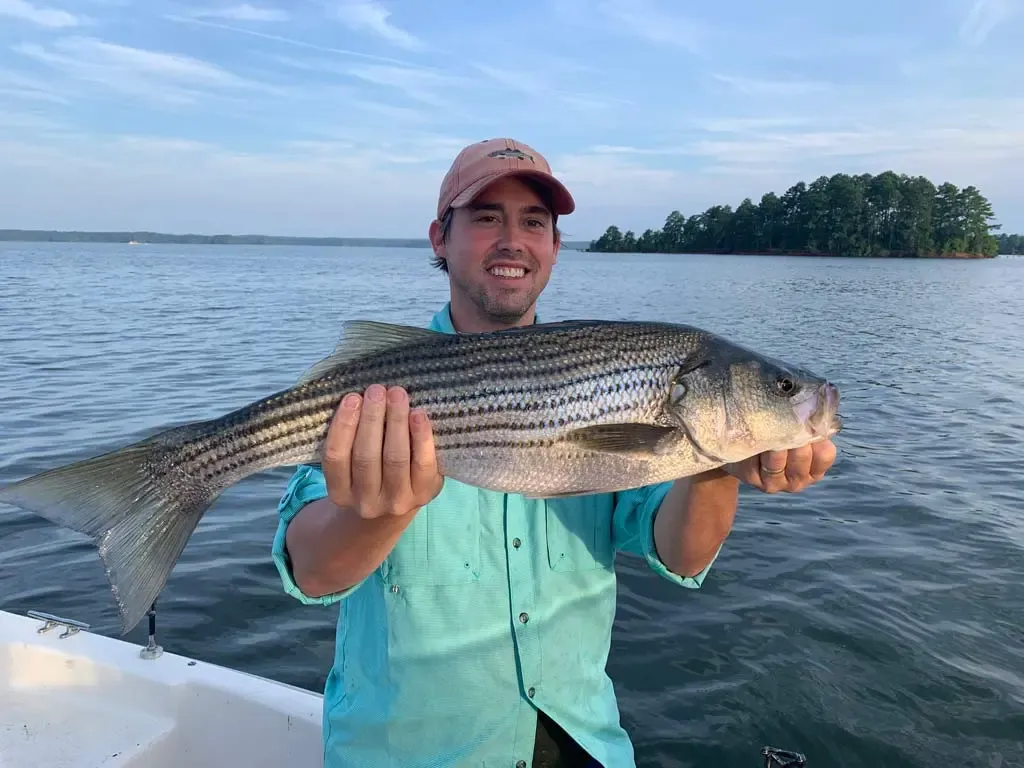
Top Lakes & Rivers for Striped Bass
One of the first questions new striper anglers ask is, "Where should I go?" While they're famous for coastal runs, plenty of freshwater systems hold incredible populations of these hard-fighting fish. We've supplemented this list with data from official sources to show just how healthy these fisheries are.
Here are a few of my favorite and most productive fisheries:
Lake Texoma, TX/OK: This is a world-class fishery where I've had mornings chasing surface blitzes that felt like a guaranteed hookup on every cast. It's one of the most exciting and consistent places you can target striped bass.
According to the Texas Parks and Wildlife (TPWD), Lake Texoma is one of the very few inland reservoirs in the nation with a completely self-sustaining striped bass population, requiring no stocking to maintain its incredible numbers.
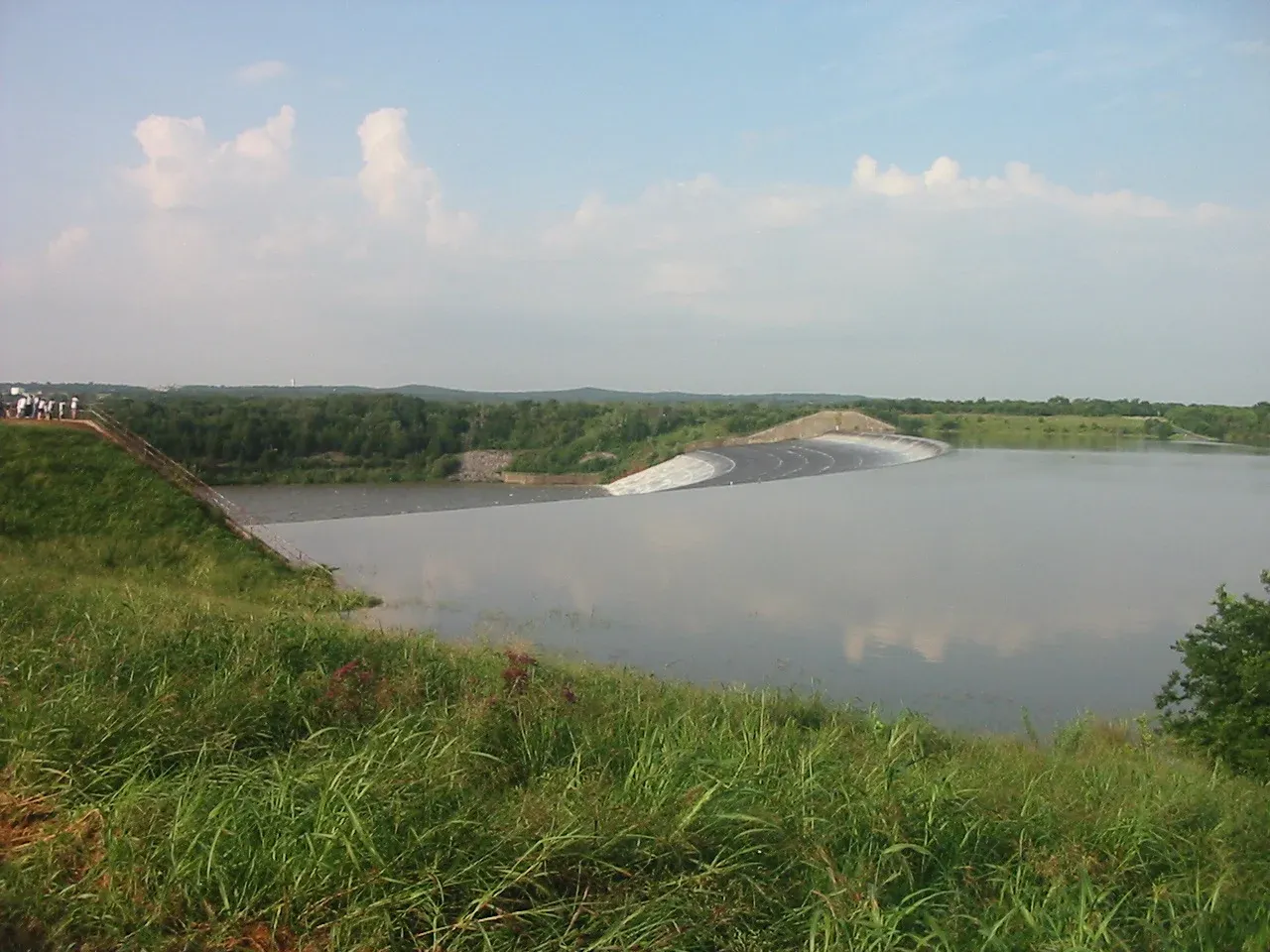
Lake Murray, SC: This lake is legendary for producing not just high numbers of fish, but true trophies that will test your gear and your will. The topwater action at dawn can be absolutely explosive.
Underscoring its trophy potential, recent surveys by the South Carolina DNR confirmed that an incredible 15% of the adult stripers sampled here exceed 20 pounds, a ratio significantly higher than most regional fisheries.
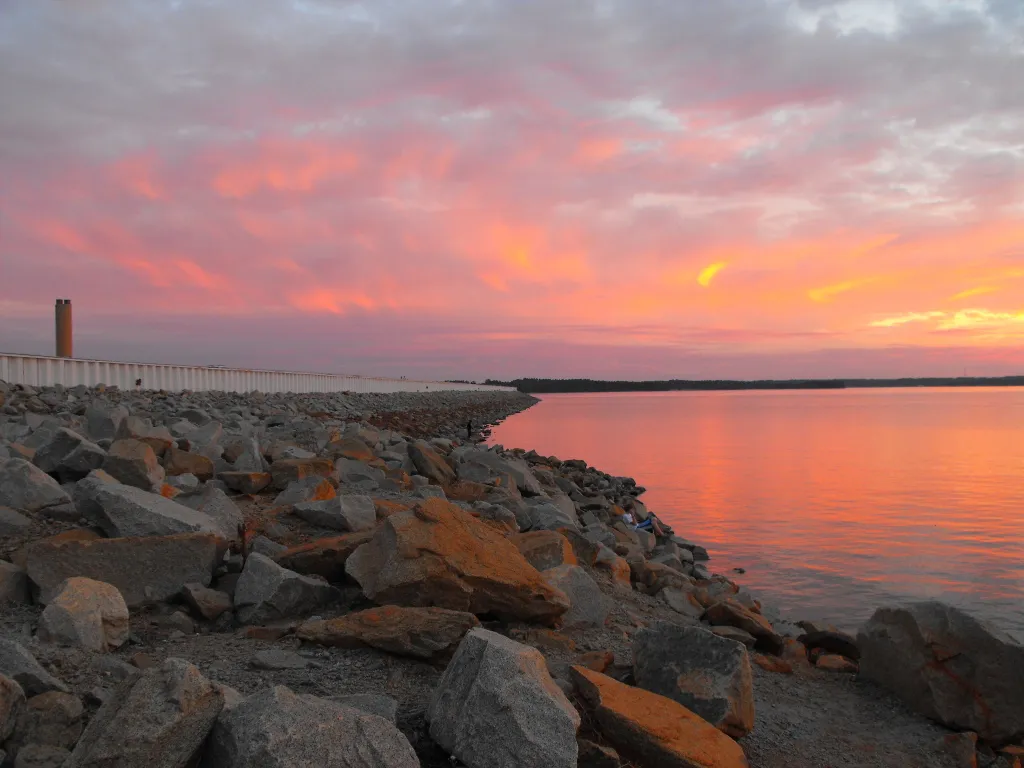
Hudson River, NY: If river fishing is your style, the spring spawning run up the Hudson is an epic, must-do event for any serious angler. The sheer volume of fish moving upriver is a sight to behold.
The Atlantic States Marine Fisheries Commission notes that due to successful conservation, recent seasons have shown one of the strongest classes of new spawners in the past decade, giving anglers a legitimate shot at a 30+ pound fish.
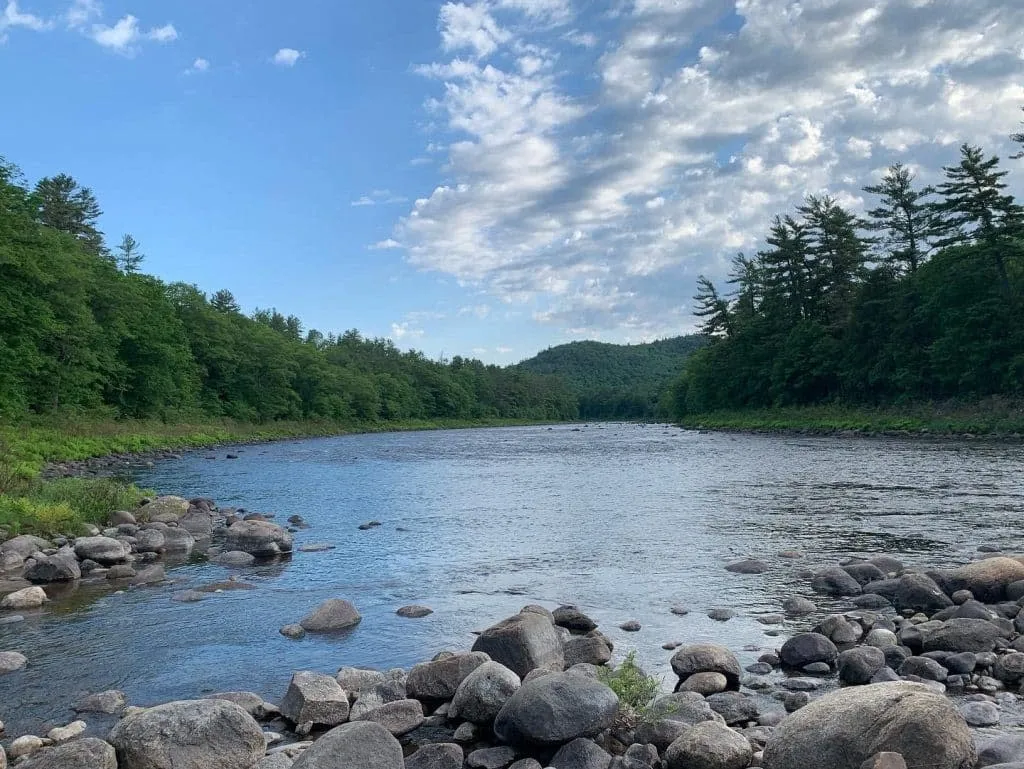
Lake Lanier, GA: This impoundment is a fantastic place to learn various techniques, from deep vertical jigging to trolling open water. Its health is maintained through a robust stocking program.
To ensure the action stays hot, the Georgia DNR's robust stocking program recently introduced over 400,000 striped bass fingerlings into the lake in a single year.
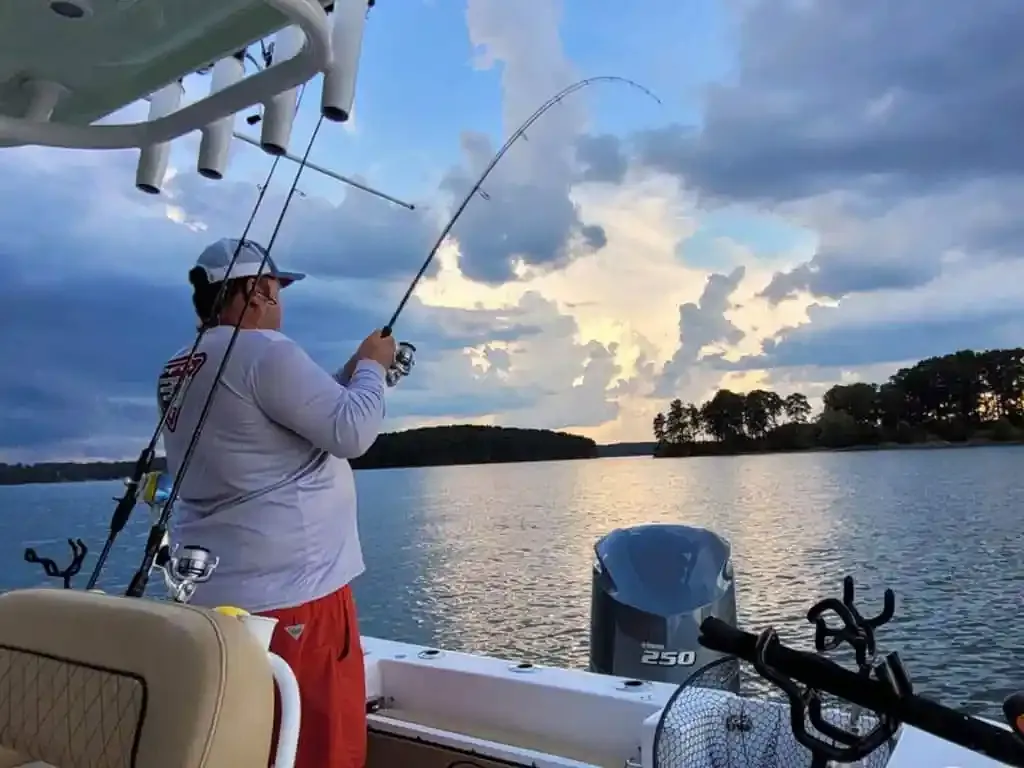
Beaver Lake, AR: A gem in the Ozarks, Beaver Lake provides such a thriving, forage-rich habitat that it has become a factory for big fish.
The fishery is so healthy that the Arkansas Game and Fish Commission (AGFC) reports that the environment allows striped bass to reach trophy sizes in as little as 5 to 7 years.
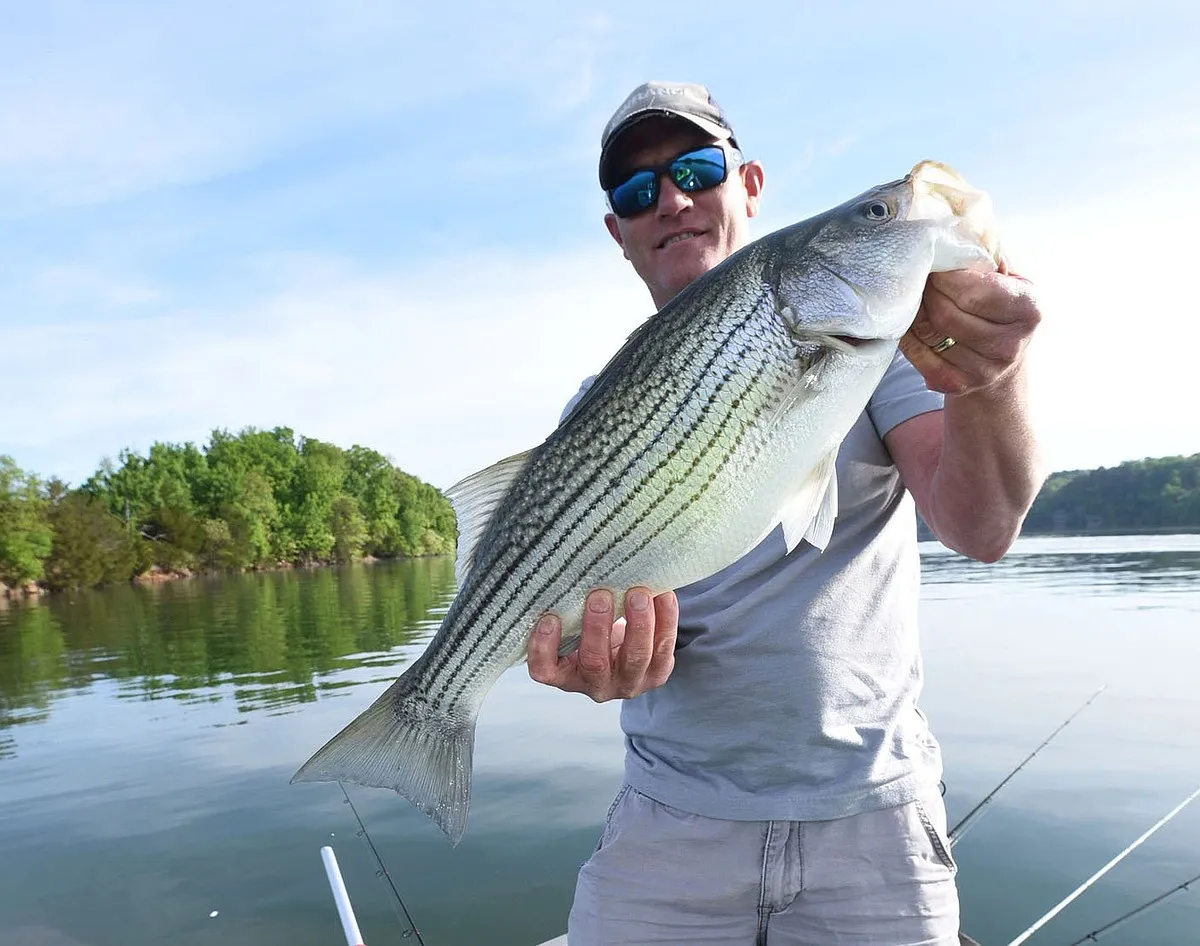
Pro Tip: Before any trip, check local fishing reports and the websites of these state agencies. They often provide the most current data on water levels, fish location, and recent survey results, which is priceless for planning.
Understanding Seasonal Striper Behavior
To master striper angling, you must understand their seasonal movements. They aren't static; their behavior changes dramatically with the seasons.
Spring (Water Temps: 50-65°F)
This is a prime time. Stripers move into shallower creeks and upriver to stage for the spawn.
- Focus: Creek mouths, rocky points, and river channels.
- Top Tactics: Slow-rolling large swimbaits, casting topwater plugs in the early morning, and fishing live shad.
Summer (Water Temps: 70°F+)
As the water warms, stripers retreat to find cooler, oxygen-rich water. This is when your fish finder becomes your best friend.
- Focus: Deep submerged humps, thermocline layers, and main lake points.
- Top Tactics: Vertical jigging with heavy spoons, trolling with downriggers or umbrella rigs, and live-lining bait at specific depths.
Fall (Water Temps: 60-70°F)
This is the magic window. Stripers feed aggressively to fatten up for winter, often schooling up and chasing bait to the surface in a frenzy.
- Focus: Watch for diving birds—they will lead you directly to the action! Cover water quickly across main lake flats and points.
- Top Tactics: Casting walking baits (like a Zara Spook) into surface blitzes, burning lipless crankbaits, and running umbrella rigs.
Winter (Water Temps: Below 50°F)
The bite slows, but the fish you catch are often the biggest of the year. Patience is key.
- Focus: Deep structure, steep bluff walls, and creek channel bends.
- Top Tactics: Downsizing your presentation. Work jigs, flukes, and spoons very slowly along the bottom.
The Best Lures and Baits That Get Bites
The right presentation can make or break your day. Here is my go-to arsenal, which includes many of the best lures for striped bass available today.
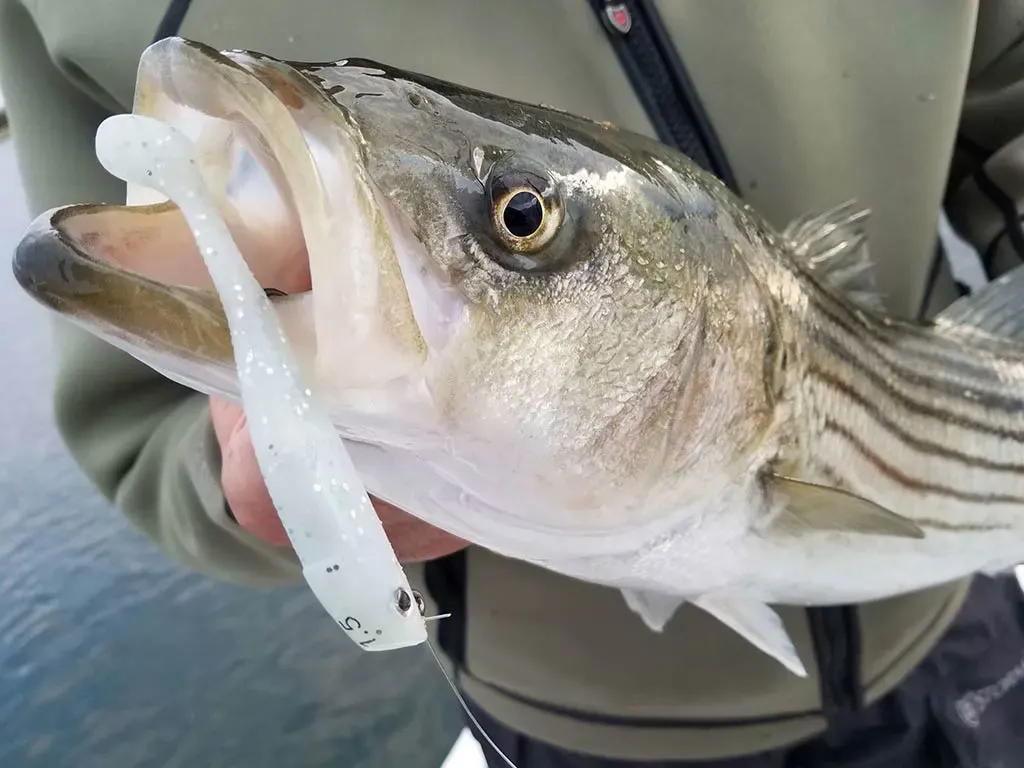
1. Live Bait (Shad or Herring) If you want the most consistent results, you can't beat natural prey. Free-lining a lively shad near a school of marked fish on your sonar is deadly.
2. Bucktail Jigs (1-3 oz) Simple, versatile, and incredibly effective. Tip it with a soft plastic trailer and bounce it off the bottom or swim it through suspended schools to mimic a wounded baitfish.
3. Paddle Tail Swimbaits (5-7 inches) In clearer water, the realistic profile and thumping tail of a large swimbait rigged on a weighted hook is irresistible. A steady retrieve near drop-offs or structure is a proven technique.
4. Topwater Lures (Spooks, Poppers, Wake Baits) There is nothing more exciting than a striper exploding on a topwater lure. During low-light hours (dawn and dusk) or when you see surface activity, this is the most thrilling way to fish.
Essential Gear: Rods, Reels, and Rigs
Don't bring a knife to a gunfight. While some fundamentals overlap, the gear needed for stripers is a significant step up from what you might use if you already know how to fish for bass like largemouth or smallmouth. Stripers will test every piece of your equipment, so having the right setup is crucial for landing these powerful fish.
Freshwater Striper Gear Checklist
- Rod: 7' to 7'6" Medium-Heavy power, Fast action spinning or baitcasting rod.
- Reel: 4000-5000 size spinning reel or a sturdy baitcaster with a strong, smooth drag system (15-20 lbs of drag is ideal).
- Line: 20-30 lb braided mainline for strength and sensitivity.
- Leader: 15-25 lb fluorocarbon leader (about 3-4 feet long) for invisibility and abrasion resistance.
- Hook (for bait): 1/0 to 5/0 circle hook for increased hookup rates and easier, safer releases.
My Go-To Rigs
Carolina Rig (for Live Bait): This is the standard for presenting live bait near the bottom. The setup allows your bait to swim naturally above the weight.
Jig Head Rig (for Artificials): The simplest setup. A weighted jig head paired with a swimbait, fluke, or bucktail. This is perfect for casting, swimming, or vertical jigging.
Proven Tactics for Shore, Boat, & Kayak
You can successfully target stripers from any platform. The key is adapting your strategy.
From the Shore
Focus on access points with current and structure. River mouths, dam tailraces, bridge pilings, and rocky points are all striper magnets. Fan-cast the area with lures and consider setting out a second rod with live or cut bait on the bottom.
From a Boat
When you learn how to fish striped bass from a boat, technology becomes your biggest advantage. Use your sonar (especially DownScan and SideScan) to locate bait schools and mark fish. Trolling with umbrella rigs or down-lining with live bait are deadly effective methods for covering the vast expanses of a large reservoir.
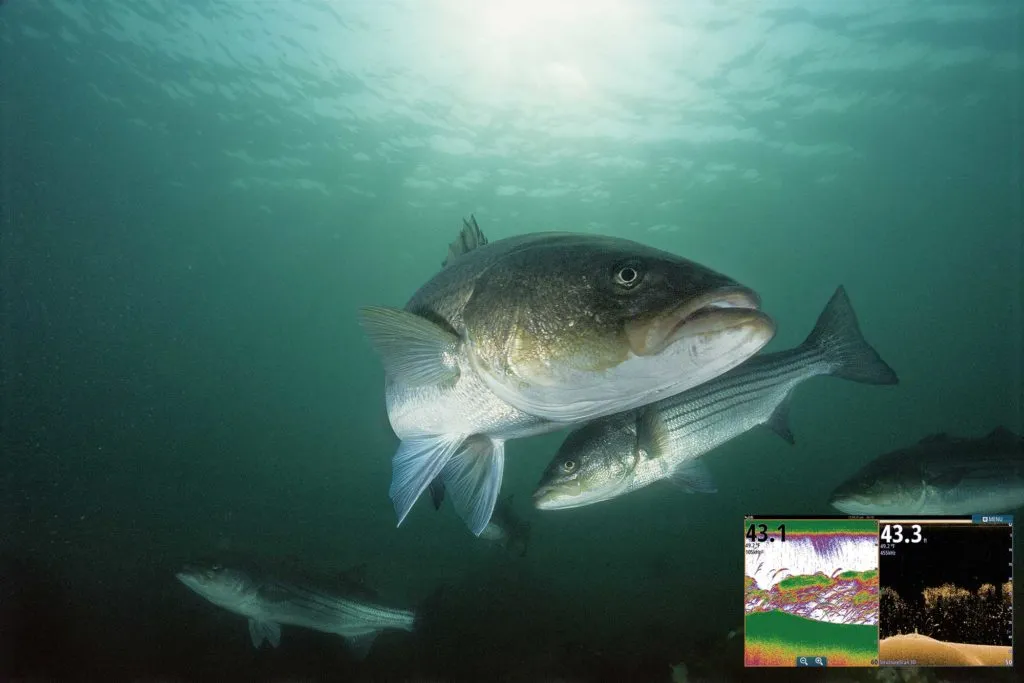
From a Kayak
The kayak's advantage is stealth. You can sneak into shallow coves at sunrise for topwater action or position yourself silently over deep humps for vertical jigging. A compact fish finder and a couple of rod holders are all you need.
Responsible Angling & Conservation
Learning how to catch these fish is only half the battle. Protecting the resource for future generations is just as important.
- Know The Regulations: Striper laws (size limits, bag limits) vary by state and waterbody. Always check the latest rules before your trip.
- Practice Smart Handling: Use a rubberized net, wet your hands before touching the fish, and support its body horizontally. Keep the fish in the water as much as possible.
- Quick & Safe Release: Use long-nose pliers or a dehooker for quick hook removal. Crushing the barbs on your hooks makes this much easier and safer for the fish.
- Selective Harvest: Big, trophy-class stripers are the prime breeders. Consider releasing the largest fish to ensure a healthy future for the fishery.
FAQs
Conclusion
Mastering the art of striper fishing is more than just memorizing lures and locations; it’s about learning to think like a predator. It’s about understanding how weather, current, and season constantly change the underwater world, and respecting the raw power of these incredible fish. That foundational knowledge is the true secret of how to fish for striped bass consistently, season after season.
You now have the playbook-the locations, the seasonal tactics, and the gear setups that have been proven to work. The real learning, however, happens on the water. Take these strategies, adapt them to your local fishery, and never stop observing.
Aviv Nguyen is a passionate fisherman who loves sharing stories and tips from his fishing adventures. Whether it’s freshwater or sea, he finds joy in every cast and aims to inspire others to enjoy the great outdoors through fishing.
Share This Post With Friends

